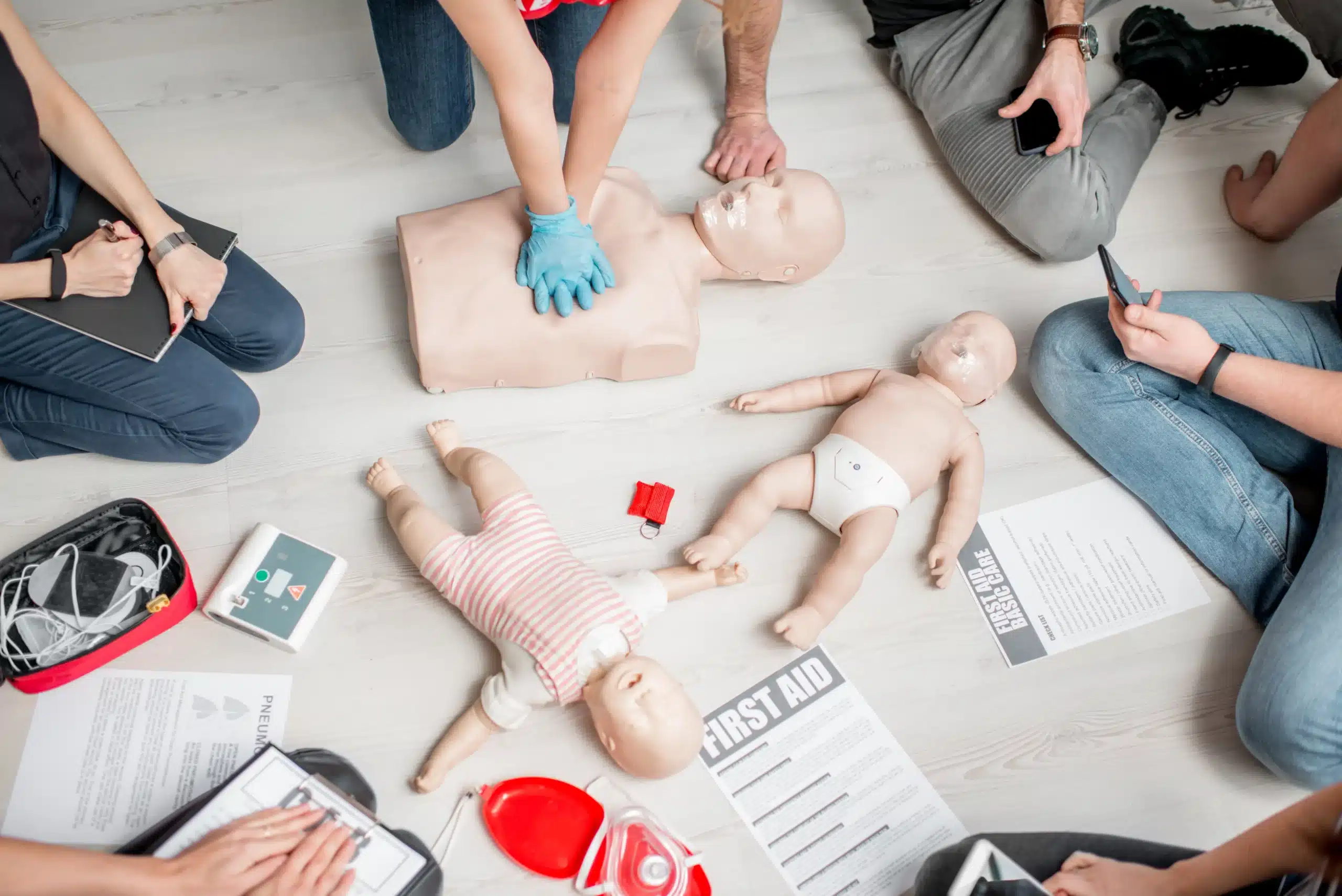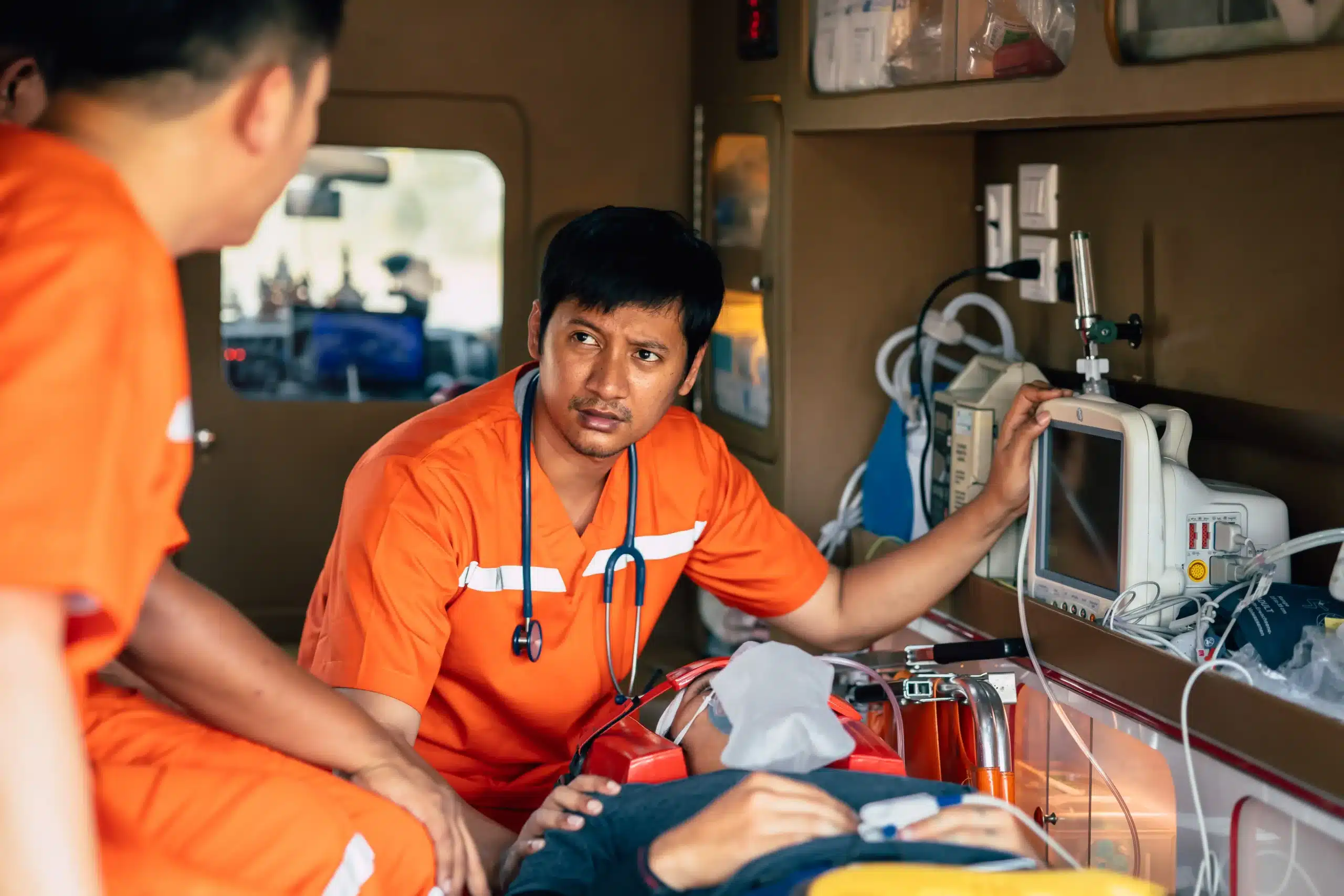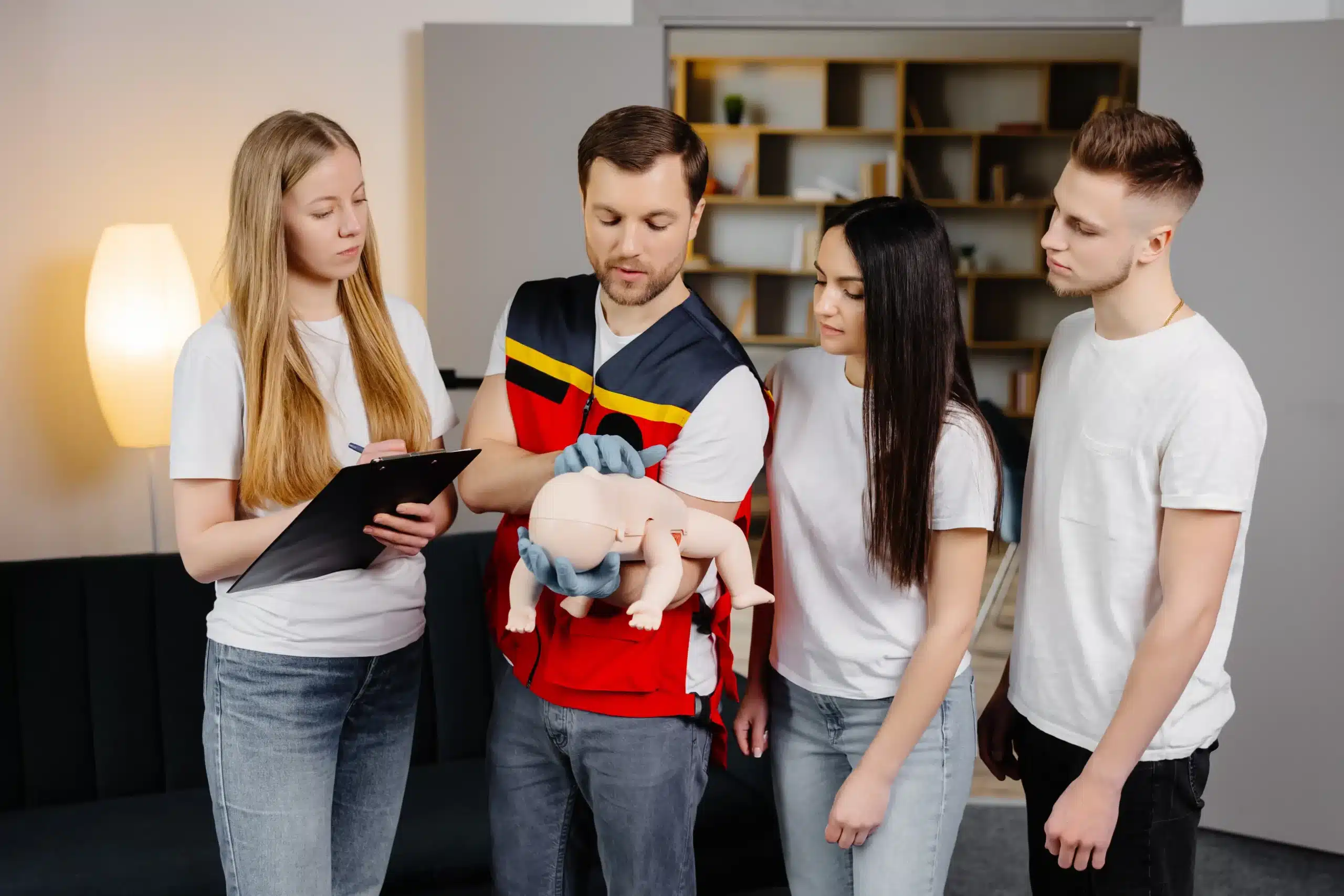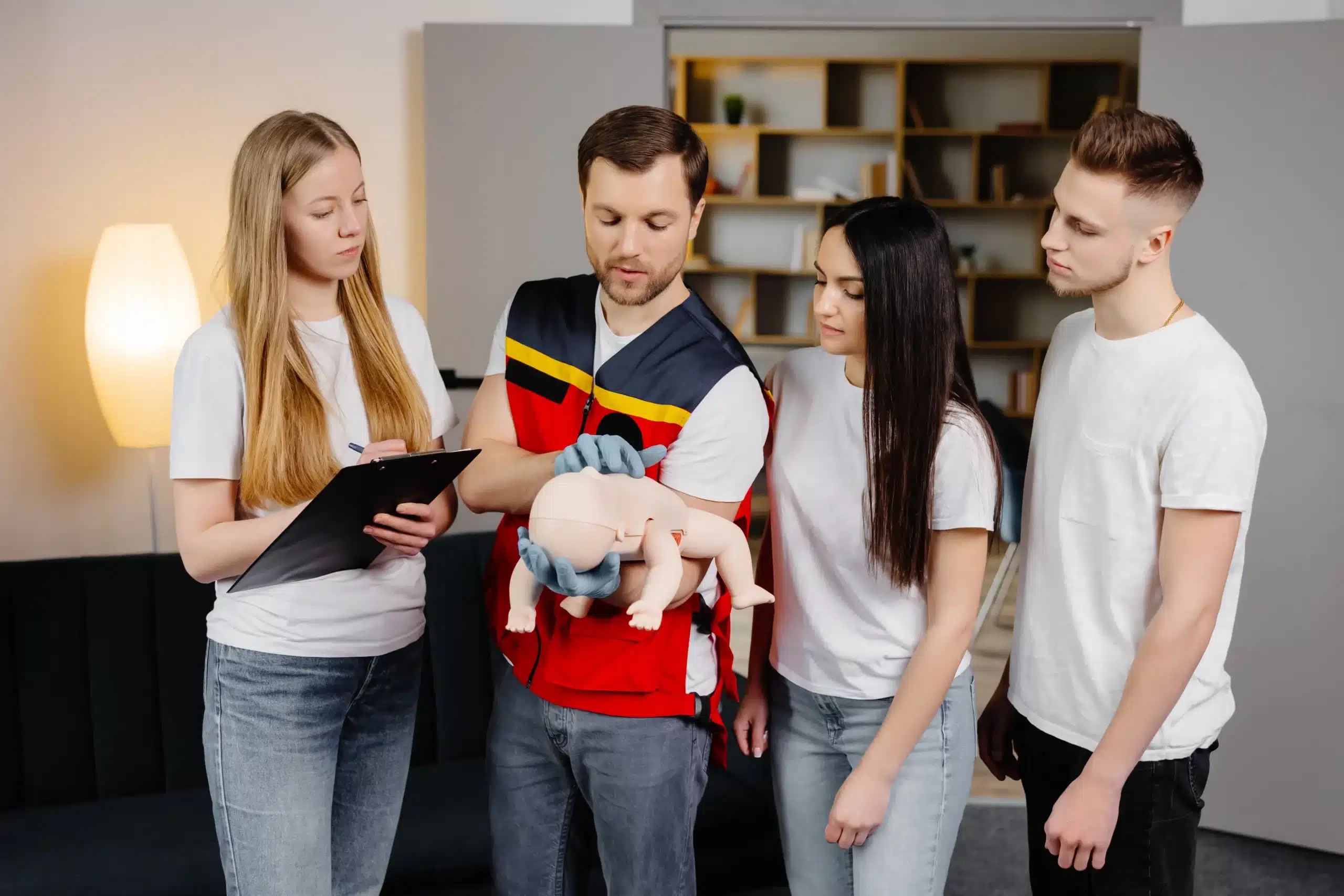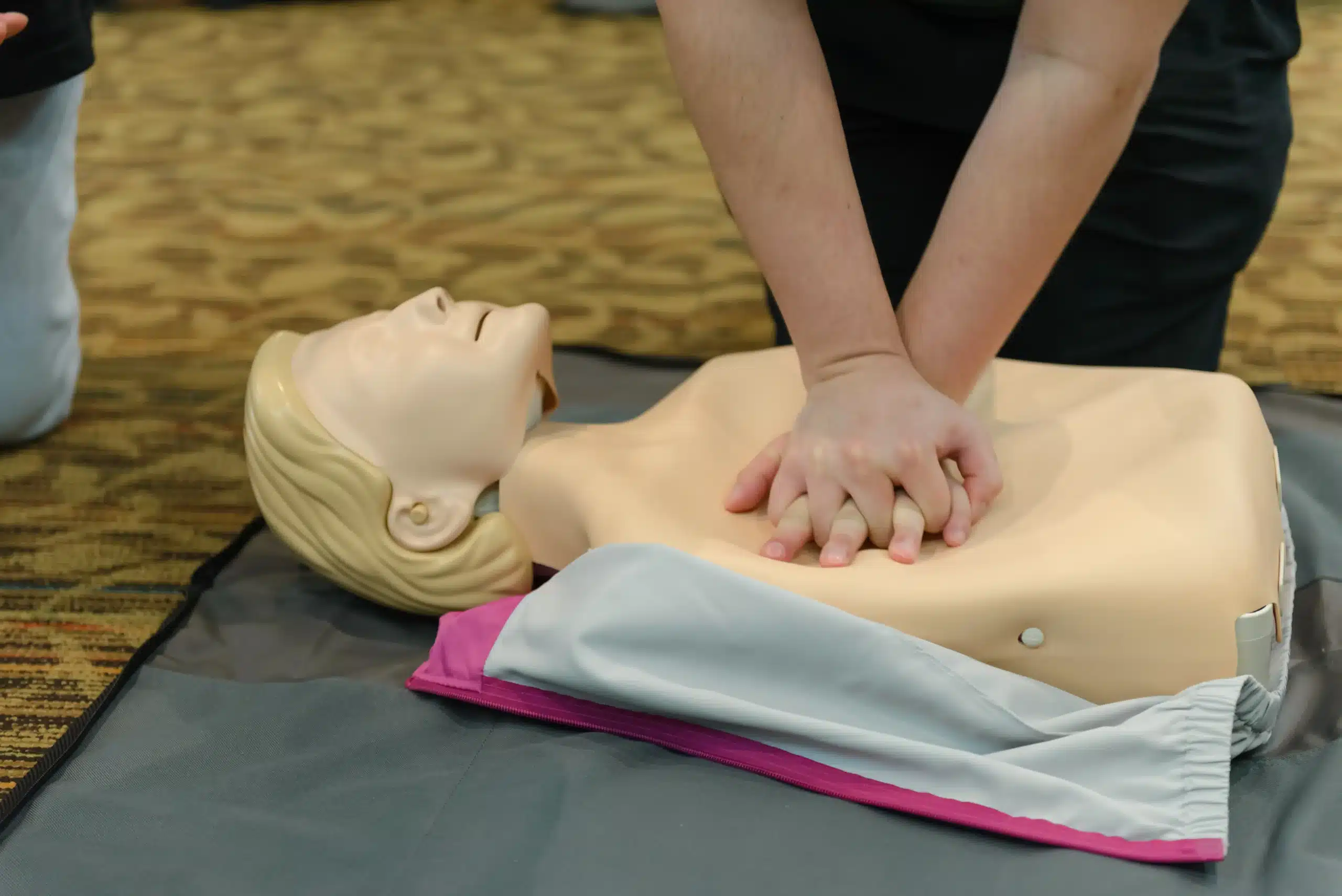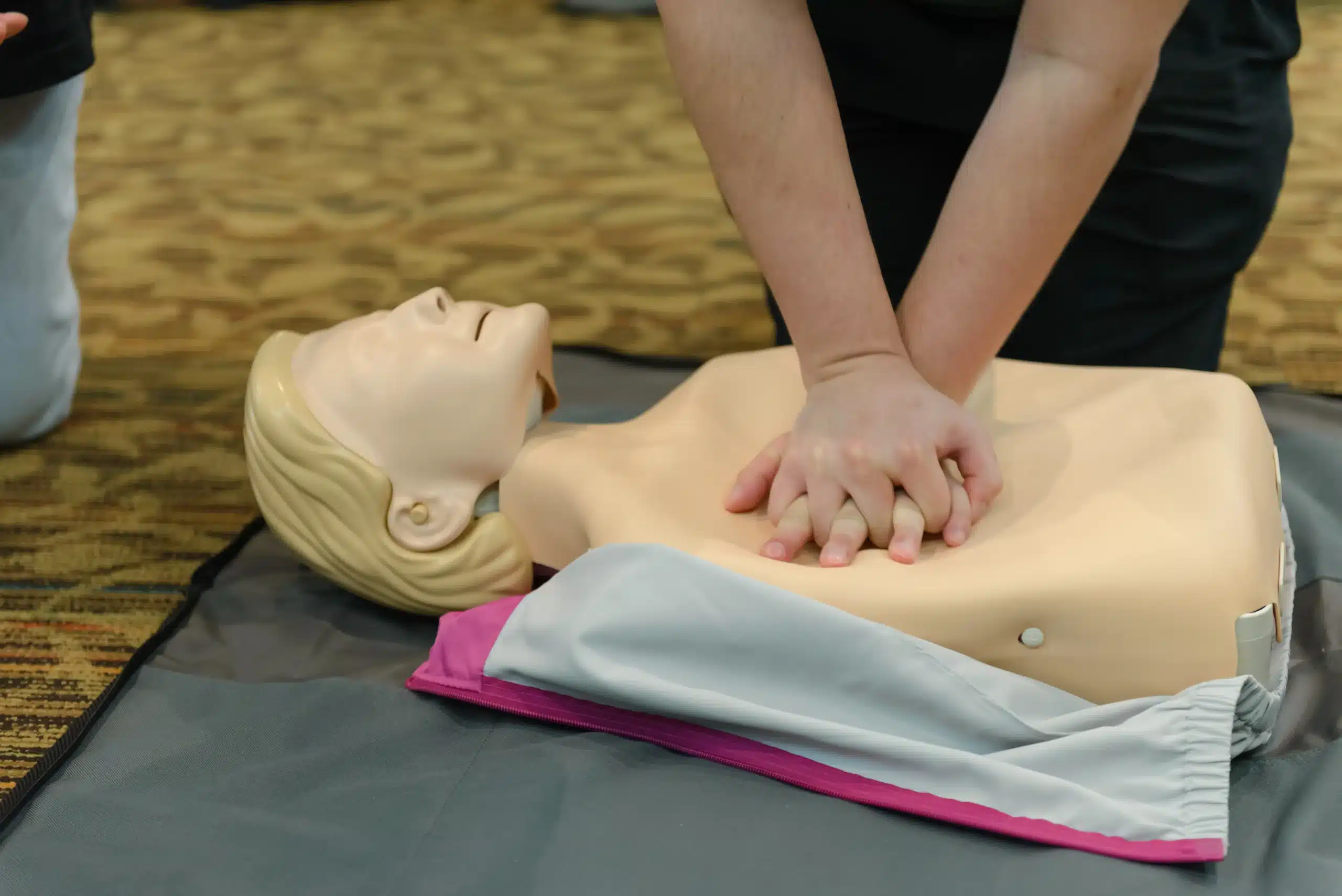Empowering yourself with life-saving skills is one of the most valuable things you can do, both for yourself and your community. CPR training in SF provides you with the knowledge and confidence to respond effectively during medical emergencies. This guide serves as your go-to resource for all things CPR training in San Francisco. We’ll cover the different types of CPR certifications, including BLS, ACLS, and PALS, and explain which one might be right for you. We’ll also explore the process of finding a reputable training provider, discuss what to expect during a CPR course, and offer tips for maintaining your certification. Plus, we’ll address common concerns and highlight the many benefits of becoming CPR certified. Let’s get started on your journey to becoming a confident first responder.
Key Takeaways
- CPR training empowers you to save lives: Whether you’re a healthcare professional or a concerned citizen, learning CPR provides you with the skills and confidence to respond effectively in emergencies.
- Find the right CPR course in San Francisco: Explore a variety of options, from basic CPR and First Aid to advanced certifications like BLS, ACLS, and PALS. Consider your schedule, learning preferences, and budget when selecting a course.
- Stay prepared by maintaining your CPR skills: Regularly refresh your knowledge and renew your certification to ensure you’re always ready to provide assistance when needed. Take advantage of online resources and continuing education opportunities.
What is CPR and Why is It Important?
CPR, or cardiopulmonary resuscitation, is a life-saving technique used when someone’s heart has stopped beating. It involves chest compressions and rescue breaths, which work together to keep oxygenated blood flowing to the brain and other vital organs. This keeps the person alive until professional medical help arrives. Learning CPR means you can make a real difference in a life-or-death situation. The American Heart Association stresses the importance of CPR and its effectiveness in improving survival rates for cardiac arrest victims.
CPR training provides the skills and confidence to respond quickly and effectively during emergencies. It’s not just about memorizing steps, but understanding how to apply those steps correctly under pressure. CPR Educators discuss the impact of CPR in various emergencies and how it can dramatically improve outcomes. Put simply, CPR is a skill that can save lives.
CPR Training Courses in San Francisco
San Francisco offers a variety of CPR training courses to meet different needs. Whether you’re a healthcare professional, a childcare provider, or simply someone who wants to be prepared for emergencies, you can find the right course for you. Here’s a breakdown of some common CPR certifications:
BLS
The Basic Life Support (BLS) course is designed for healthcare providers and those in related fields. It covers core life-saving skills for adults, children, and infants, including CPR, using an AED, and relieving choking. BLS certification is often a job requirement for many healthcare positions and demonstrates a higher level of proficiency. The RQI program offered by Safety Training Seminars is a popular way for medical professionals to obtain their BLS certification.
ACLS
The Advanced Cardiovascular Life Support (ACLS) course builds upon the skills learned in BLS. It’s geared towards healthcare professionals who manage cardiopulmonary arrest and other cardiovascular emergencies. ACLS training covers advanced airway management, pharmacology, and team dynamics during resuscitation.
PALS
The Pediatric Advanced Life Support (PALS) course focuses on the specialized needs of infants and children during medical emergencies. Like ACLS, it’s designed for healthcare providers, including doctors, nurses, and paramedics. PALS training equips professionals with the knowledge and skills to effectively manage pediatric respiratory and cardiovascular emergencies.
Heartsaver CPR/AED
Heartsaver courses are designed for anyone who wants to learn CPR and how to use an AED. These courses are suitable for community members, teachers, and those in non-healthcare roles. While not as comprehensive as BLS, Heartsaver CPR and AED training still provides valuable, potentially life-saving skills. Many organizations base their CPR/AED training on the American Heart Association (AHA) curriculum, even if they don’t offer official AHA certification.
Top CPR Training Providers in San Francisco
Finding the right CPR training provider is crucial for a positive learning experience. Here’s a rundown of some reputable options in San Francisco:
Safety Training Seminars
Safety Training Seminars offers a comprehensive range of CPR and first-aid certification courses in San Francisco. They understand that while you don’t technically need formal training to perform CPR in an emergency, a certification course builds confidence and ensures you’re well-prepared. They also offer convenient schedules, including same-day certification, making it easy to fit training into your busy life. Learn more about their CPR certification courses in San Francisco. You can also browse their course calendar to find a class that fits your schedule.
American Heart Association
The American Heart Association (AHA) sets the standards for CPR training. Many organizations, including Safety Training Seminars, use the AHA’s curriculum. The AHA’s RQI program (Resuscitation Quality Improvement) is a popular choice for medical and healthcare professionals seeking BLS, ACLS, and PALS certification. It’s a modern and efficient way to stay up-to-date on the latest resuscitation guidelines. You can find more information on AHA-compliant courses in San Francisco.
American Red Cross
The American Red Cross is another well-known provider of CPR and first-aid classes in San Francisco. Their courses, taught by trained instructors, focus on building the skills and confidence to respond effectively in emergencies. Find a Red Cross CPR class near you.
Local Hospitals and Community Centers
While the city of San Francisco doesn’t directly offer CPR/First Aid training, resources like the SF Fire website can direct you to certified organizations. They may also offer information on alternative free options. Checking with local hospitals and community centers can also uncover potential training opportunities in your area.
What to Expect During CPR Training
CPR training blends theory and hands-on practice, creating a dynamic learning environment. Here’s a glimpse of what awaits you:
Course Duration and Certification Validity
CPR courses typically last a few hours, varying based on the specific level and provider. Certification remains valid for two years, after which you’ll need recertification to stay up-to-date and maintain your skills. Course costs depend on factors like location, format (in-person, online, or blended), and any additional features offered. Safety Training Seminars offers a low price guarantee for courses in San Francisco.
Hands-on Practice and Feedback
Hands-on practice is the core of effective CPR training. You’ll work with training mannequins, practicing chest compressions, rescue breaths, and other techniques in a simulated environment. Many courses now use feedback devices with these mannequins, providing real-time feedback on your compressions to help refine your technique and build confidence.
Skills and Certification
Instructors demonstrate techniques and offer personalized guidance throughout your training. You’ll learn to recognize cardiac arrest, perform high-quality CPR (for adults, children, and infants, depending on the course level), and use an AED. Upon successful completion, you’ll receive a CPR certification card, validating your skills and knowledge. This certification is often required for healthcare professionals, childcare providers, and other roles demanding CPR competency.
CPR Training Costs in San Francisco
CPR training is an investment in your skills and ability to help in a crisis. Understanding the associated costs can help you budget and find the best fit for your needs. Let’s break down the typical price ranges and explore ways to make training more affordable.
Average Course Prices
CPR course costs in San Francisco, and surrounding areas like Daly City, San Mateo, and Oakland, vary based on several factors. The type of course, whether it’s online or in-person, and the training provider all play a role. Basic CPR courses with AED training typically range from $15 to $55. Adding First Aid certification usually increases the price, generally falling between $60 and $140. For healthcare providers needing certifications like BLS, ACLS, or PALS, costs can range from $60 to $300, depending on the specific requirements. Online CPR courses offer a more budget-friendly option, with prices often ranging from $20 to $60.
Discounts and Financial Assistance
Finding ways to save on CPR training is always helpful. Many training centers offer group discounts, making it a cost-effective choice for workplaces or community organizations. Bundling CPR with First Aid training can also sometimes lower the overall cost compared to taking separate courses. Some providers may offer discounts for students, seniors, or other groups, so it’s always worth asking. You might also find community programs or grants that offer financial assistance for CPR training, so researching options in your local area can be beneficial.
Safety Training Seminars’ Low Price Guarantee
At Safety Training Seminars, we believe that high-quality CPR training should be accessible to everyone. We offer a low price guarantee on our courses, including BLS, ACLS, and PALS, ensuring you receive excellent instruction at a competitive price. Our convenient daily course schedules and various locations across Northern California, including our San Francisco office, make it easy to find a class that fits your schedule. We also offer same-day certification. Check our course calendar for BLS, ACLS, and PALS courses.
Choose the Right CPR Training
Finding the right CPR training involves understanding your needs, schedule, and preferred learning style. Let’s break down how to make the best choice for you.
Assess Your Needs and Goals
First, think about why you’re pursuing CPR certification. Are you required to have it for your job, or are you learning it for personal preparedness? While you don’t technically need formal training to perform CPR in an emergency, a certification course ensures you’re well-prepared and confident. Knowing your “why” helps determine which course is most appropriate. For example, healthcare providers often require specific certifications like ACLS or PALS, while others may only need basic CPR and First Aid.
Consider Your Schedule and Learning Style
Life gets busy, so finding a course that fits your schedule is essential. Safety Training Seminars offers courses seven days a week across various locations in San Francisco, Daly City, San Mateo, and Oakland, making it easier to find a time that works. Also, consider your learning style. Do you thrive in a hands-on, in-person environment, or do you prefer the flexibility of online learning? Knowing your learning preferences will help you choose a course format you’ll enjoy.
Evaluate Course Formats (In-Person, Online, Blended)
CPR training comes in several formats. In-person classes provide direct interaction with instructors and the opportunity for real-time feedback. Online courses offer flexibility and often come at a lower price point—sometimes as low as $19.99, according to CPR Course Online. Traditional in-person classes typically range from $40 to $60. Blended learning combines online modules with in-person skills sessions, offering a balance between convenience and hands-on practice. If you’re training a larger group, providers like CPR1 may offer group discounts. Consider the overall cost, including materials and certification fees. Check if the provider offers a low price guarantee, like the one from Safety Training Seminars.
Common CPR Training Concerns
It’s normal to have a few questions before signing up for a CPR class. Here are some common concerns and how Safety Training Seminars addresses them:
Training Effectiveness
You might wonder how effective CPR training is when practicing on a mannequin. At Safety Training Seminars, we use advanced mannequins with feedback devices. These provide real-time feedback on your compressions and breaths, so you know exactly what you’re doing well and where you can improve. Research shows this immediate, electronic feedback leads to better CPR performance and skill retention. Our instructors also guide you through scenarios and answer your questions, ensuring you feel confident in your abilities.
Instruction Quality
High-quality instruction is key to effective CPR training. Our instructors are American Heart Association certified and experienced in providing clear, concise, and engaging instruction. They emphasize specific, targeted feedback, ensuring you understand how to deliver high-quality CPR in a real emergency. The American Heart Association recommends feedback devices in CPR courses to improve training quality and consistency, a core component of our classes. We also incorporate video demonstrations and hands-on practice to reinforce learning.
Time Commitment
We understand your time is valuable. Our CPR courses are designed to be efficient and comprehensive, covering essential lifesaving skills concisely. Our low price guarantee ensures you’re getting the best value. You can research CPR class costs from resources like GoodRx and CPR Classes Near Me, but we’re confident our pricing is competitive. We offer various course schedules and formats to fit your lifestyle, including weekday, weekend, and evening options. Check our course calendar for BLS, ACLS, and PALS certifications.
Maintain Your CPR Certification
Keeping your CPR skills sharp is essential for responding effectively in emergencies. This section covers how to maintain your certification and stay up-to-date with the latest guidelines.
Renewal Requirements
CPR certifications, like those offered by the American Heart Association and the American Red Cross, are typically valid for two years. To maintain your credentials and ensure you’re prepared to provide assistance, renew your certification before it expires. Renewal courses cover the latest techniques and guidelines, keeping your skills current. Check with your certifying organization for specific renewal requirements and courses. Safety Training Seminars offers convenient renewal courses for certifications like BLS, ACLS, and PALS to help you stay certified.
Continuing Education
Even between renewals, refreshing your CPR knowledge and skills is beneficial. Resources like the Red Cross’s online refreshers can help maintain your skills and keep your knowledge sharp. Staying engaged with CPR information through articles, videos, or practice sessions can build your confidence and preparedness for real-life situations. Regularly reviewing the material helps ensure you can effectively recall and apply these life-saving techniques when needed.
Benefits of CPR Certification in San Francisco
Getting CPR certified offers several personal and professional advantages. In a busy city like San Francisco, knowing you can handle a medical emergency brings peace of mind. Whether you’re a healthcare provider, a parent, or just someone who wants to be prepared, CPR training gives you valuable, potentially lifesaving skills.
A key benefit is the confidence you’ll develop. CPR training prepares you to act quickly and effectively during a crisis. This preparedness creates a sense of empowerment, knowing you have the skills to make a difference. Safety Training Seminars offers convenient same-day CPR certification, making it easy to fit training into your schedule.
Beyond confidence, CPR certification significantly improves the quality of CPR you can perform. Studies show that using feedback devices during training improves the quality and consistency of compressions and breaths. This is essential for understanding and performing high-quality CPR in a cardiac emergency. These devices also increase engagement and motivation during training. Research shows students are more invested when they receive immediate feedback on their technique. This leads to better skill retention and improved outcomes in real-life emergencies, as supported by additional studies. Acquiring these lifesaving skills is also surprisingly affordable. CPR training is often available for under $100, making it a cost-effective way to improve your preparedness. Check out Safety Training Seminars’ low price guarantee for the best value in San Francisco.
Prepare for Your CPR Training
Getting ready for your CPR training can make a big difference in how much you get out of the course. A little prep work goes a long way!
What to Bring
Most CPR training providers, like Safety Training Seminars, will give you the course materials you’ll need, including manuals and any supplementary resources. Wear comfortable clothing since you’ll be actively participating in hands-on practice. A notebook and pen can be helpful for jotting down notes or questions, though it’s not usually required.
Pre-Course Prep
While you don’t need to be a medical expert before taking CPR training, familiarizing yourself with the basics can increase your confidence. The American Red Cross website offers resources to help you get acquainted with CPR techniques and procedures. Thinking about why you’re taking the training and what you hope to achieve can also be beneficial. This will help you stay focused throughout the course. Remember that ongoing practice is key to maintaining your CPR skills. Consider how you might incorporate refresher practice into your routine after training. Using feedback devices can improve your technique and ensure you’re providing effective compressions and breaths, as supported by American Heart Association research.
Related Articles
- Why CPR is Important in Healthcare – San Francisco CPR Classes
- CPR Classes in San Francisco: A Complete Guide – San Francisco CPR Classes
- Low-Cost CPR Training in Northern California: A Guide – San Francisco CPR Classes
- CPR Certification in San Francisco: Your Guide – San Francisco CPR Classes
- Discover the Power of Workplace CPR & First-Aid Training
Frequently Asked Questions
What’s the difference between BLS and Heartsaver CPR?
BLS (Basic Life Support) certification is more comprehensive than Heartsaver CPR and is generally required for healthcare providers and those in related fields. It covers a broader range of skills, including CPR for adults, children, and infants, AED use, and relief of choking. Heartsaver CPR/AED courses are designed for the general public and focus on core CPR and AED skills.
How long does CPR certification last, and how do I renew it?
CPR certifications are typically valid for two years. You’ll need to take a renewal course to maintain your certification and stay current with the latest guidelines. Check with your certifying organization or training provider, like Safety Training Seminars, for specific renewal requirements and available courses.
What if I’m nervous about performing CPR in a real emergency?
It’s completely normal to feel apprehensive about using CPR in a real-life situation. High-quality training programs emphasize hands-on practice and use feedback devices to build your confidence and competence. Instructors guide you through various scenarios and answer your questions, helping you feel prepared to respond effectively.
How much does CPR training cost in San Francisco?
The cost of CPR training varies depending on the course type, format (online or in-person), and the training provider. Basic CPR/AED courses typically range from $15 to $55, while more advanced certifications like BLS, ACLS, and PALS can range from $60 to $300. Look for providers like Safety Training Seminars that offer a low price guarantee.
What are the different CPR training formats available?
CPR training is offered in several formats: in-person, online, and blended learning. In-person classes provide hands-on practice and direct interaction with instructors. Online courses offer flexibility and convenience, often at a lower cost. Blended learning combines online modules with in-person skills sessions, offering a balance of both. Choose the format that best suits your learning style and schedule.


